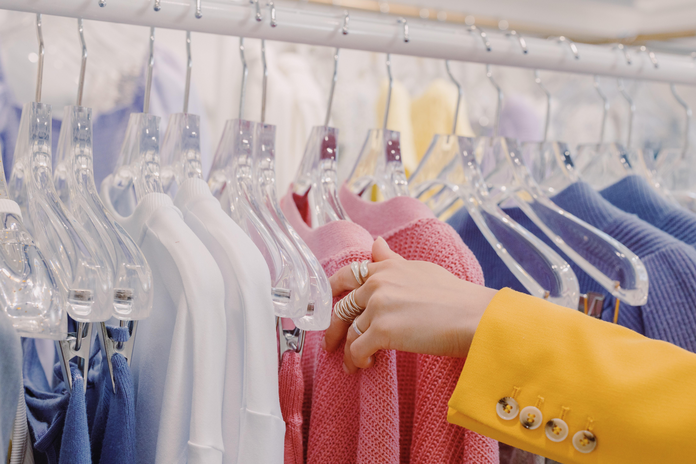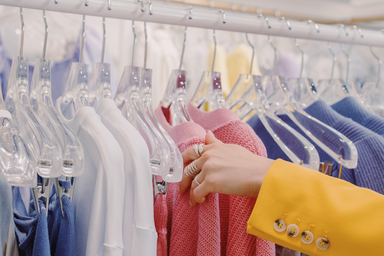In recent years, thrift stores have been all the rage. Thrift stores are great places to get cute clothes for affordable prices, sometimes even designer labels. They’re also a lot more environmentally sustainable than fast fashion retail stores because they don’t contribute to the growing amount of textile waste filling up our landfills.
When the pandemic hit our shores, it became a lot harder for fashion-forward individuals to head down to their favourite thrift stores to browse, due to concerns about hygiene and social distancing. Most thrift stores don’t have large fitting rooms like other retail stores, and having many people crowding in a store and trying on clothes could be a hotbed for the virus to spread.
Thus came the advent of the Instagram thrift store.
What is it?
Instagram thrift stores are clothing consignment stores hosted on Instagram, where people curate secondhand clothing and resell them on the platform. Store owners usually source clothes either from physical thrift stores or through other online platforms like Depop, Etsy, Mercari or Carousell. They wash or dry clean the clothes, take detailed measurements, style them and model them before uploading pictures on Instagram. Customers usually order either via direct message (DM) or by commenting on the post featuring the item of clothing they want to buy.
Some who are gifted in sewing might even rework clothes, such as cropping sweaters or creating two-piece outfits out of a maxi skirt. This could make the clothes trendier, give them a new look, or simply mend defects so these pre-loved items look good as new.
Why do they do it?
For most store owners, running a thrift store usually stems from a passion for fashion and sustainability. They take pride in being able to curate pre-loved clothes and give them a new home instead of letting them sit in a landfill. Many of them also love styling outfits, especially authentic vintage pieces that they can get hold of once in a while.
While some store owners do turn a profit, many of them don’t. This is due to the cost of sourcing good quality clothes, followed by the time spent measuring, mending, washing, modelling and generating posts for each item. But these individuals are driven by their love for this hobby and being able to showcase a variety of clothes and styles that they might not have discovered otherwise.
Why we love it!
While traditional thrift stores are great on their own, Instagram thrift stores provide more dimensions of style, convenience and reliability compared to retail stores.
Some clothes are sourced from various locations outside of Singapore, such as Japan or the United Kingdom. This is made possible when the store owners sell their own pieces that they bought overseas, or when they order from international marketplace platforms like Depop or Mercari. This provides a greater variety of options for buyers.
From a reliability standpoint, online thrift stores provide detailed and accurate measurements, as well as pictures of models, that remove some of the uncertainty that comes with shopping secondhand. In a physical thrift store, you might hesitate to try on clothes yourself due to the frequent lack of fitting rooms and the hygiene concerns. This means that some of your thrifted clothes might not fit as well as you’d like. On Instagram, you can see how the clothes drape on a real person and compare their measurements with yours, so that you can shop with ease of mind.
Instagram thrifting is also a lot more convenient. You can quickly find staple pieces or hidden gems to spruce up your wardrobe, instead of having to trawl through piles or racks of clothes at a physical thrift store. You also get clothes that have been thoroughly inspected for the best quality, which is especially important for true vintage items.
Lastly, as with any other thrift store, buying secondhand is a lot more sustainable than shopping from online fast fashion brands. In Singapore alone, we generated 168,000 tonnes of textile and leather waste in 2019. Out of that amount, only 4%, or around 6,000 tonnes, was recycled, while the rest was incinerated. This is a cause of concern for environmentalists, especially with big fast fashion chains producing millions of clothes every single day, often made with cheap synthetic materials like nylon and polyester which are mostly non-biodegradable. That’s why thrifting is a great step to reducing your waste while staying fashionable at the same time.
If you love fashion, but also want to be a responsible consumer, you should check out some of these Instagram thrift stores yourself! Even if you don’t buy anything, these stores are usually great as lookbooks for your perusal if you ever need some fashion inspiration. Who knows, you might even feel inspired to give your own pre-loved clothes a brand new home!
Check out some of the stores we love:
- Closet Tapirs (@closettapirs)
- Daffodilly Co (@daffodilly.co)
- Spruce (@thesprucestore)
- Kittydressed (@kittydressed)
- Ssaltythrifts (@ssaltythrifts)


